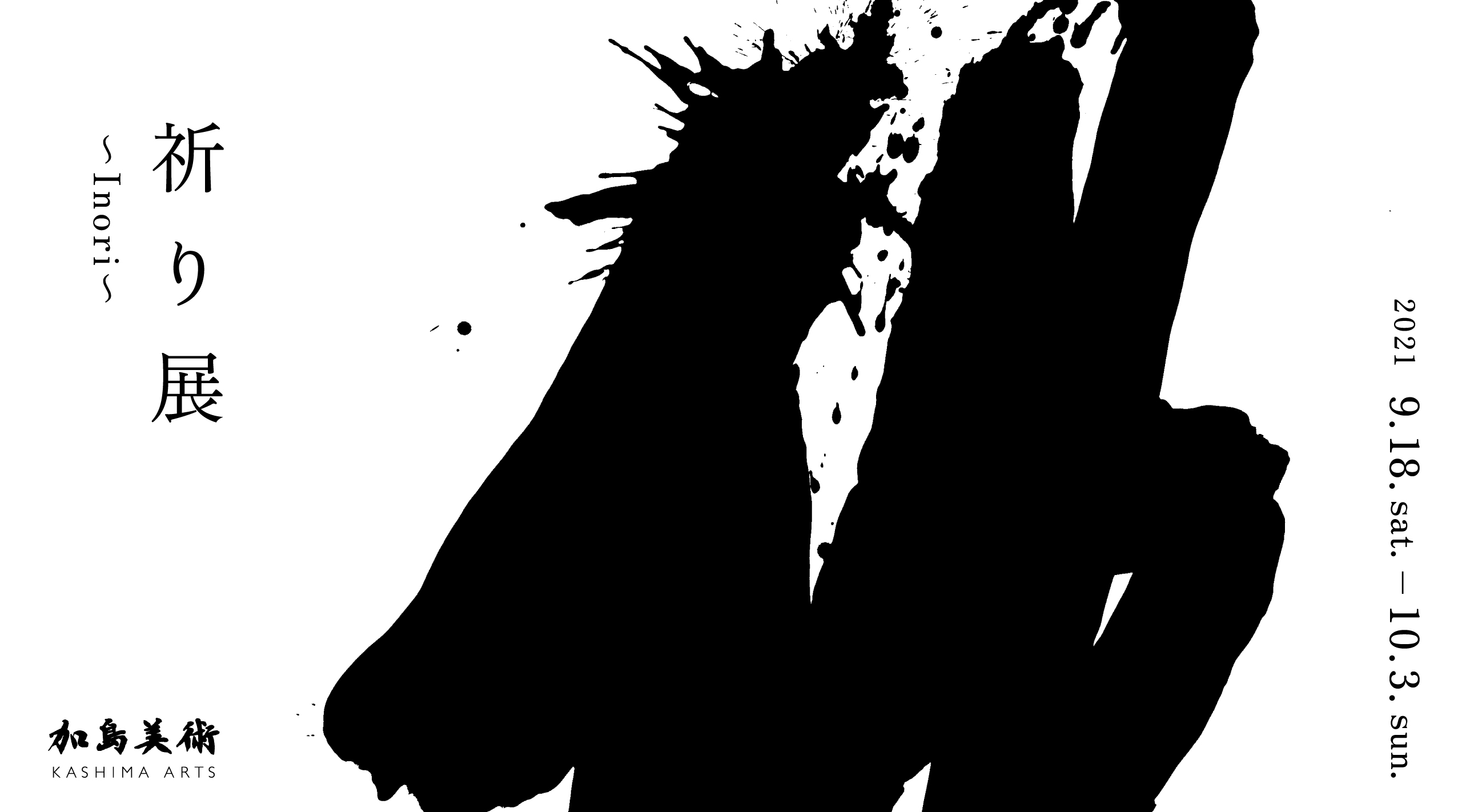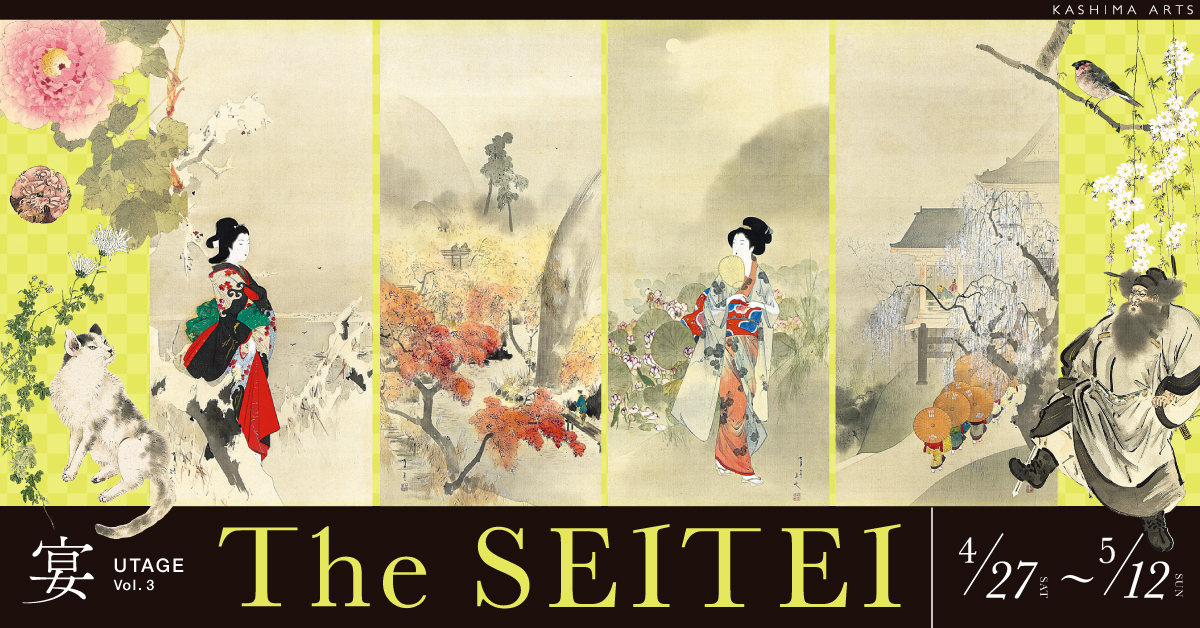About the Exhibition
The act of prayer has been integral to daily life since antiquity. In addition to being objects of reverence, religious symbols and deities have been a continued source of inspiration.
Depictions of prayer have been discovered on wall paintings dating 40,000 years back and the art of prayer is said to have spread throughout Japan during the Asuka period, when Buddhism was introduced from the ancient Korean kingdom, Baekje.
Inori seeks to draw attention to the ways in which prayer is expressed throughout Japanese art history. Starting with Buddhist objects of worship, Inori will address the many forms of prayer manifested through the works of calligraphers, painters, photographers, and sculptors.
In the wake of this unprecedented era, the exhibition hopes to touch upon the timeless aspects of prayer that has persisted in works of art
From historic Buddhist artifacts designated as important cultural property to modern works that unite classical and contemporary aesthetics, we invite you to take this opportunity to experience the fullest spectrum of a prayer.
Exhibiting Artists
Hakuin Ekaku (1685-1768)
A Rinzai-sect Buddhist monk who is named as one of Zen Buddhism’s most influential figures. Born in the Suruga Province (present-day Shizuoka), he lived during the mid-Edo period. He left home at fifteen to pursue a monastic life and was ordained at Shoin-ji. During residence, he studied under Dokyo Etan (Shoju Rojin, 1642–1721) and would become head monk at Myoshin-ji. He taught Suio Genro and Torei Enji and become known for his revival of Rinzai Zen Buddhism. Whilst popularizing Zen Buddhism, he also created a vast amount of calligraphic works. By illustrating various Zen principles and sermons, Hakuin provided visual alternatives to a widely illiterate crowd. Although Hakuin began to paint very late in his life, he is now considered one of the greatest Zen Buddhist painters.
His humorous works, which often feature symbolic characters, such as the Daruma, and references to Confucianism, folk religion, and songs, have remained popular even today.
Inoue Yuichi (1916-1985)
A pioneering force of the avant-garde movement who stirred a great change in the world of calligraphy. He studied under the talented calligrapher, Ueda Sokyu and formed the Bokujinkai. Through his work, Inoue redefined the rules of calligraphy and re-established it as an art form. His dynamic brushwork laid the foundations for a new avant-garde aesthetic and his highly evaluated works were displayed overseas at exhibitions such as MoMA’s Japanese Calligraphy, the Sao Paulo Biennale, and Documenta 2.
Murakami Kagaku (1888-1939)
A Japanese painter of the Taisho to Showa period. Born under the name Takeda Shinichi, Murakami graduated from present-day Kyoto City University of Arts. His works were selected numerous times for the Bunten exhibitions and awarded special selection in 1916. He eventually went against the Bunten and formed the Kokuga Sosaku Kyokai with Tsuchida Bakusen, Ono Chikkyo and Sakakibara Shiho. Due to his worsening asthma, Murakami eventually moved to Kobe, gradually retiring from the world of painting, and focusing on drawing. He created numerous highly spiritual Buddhist paintings that fused the wonders of the sacred and the profane.
Other exhibiting artists include Kobayashi Kokei (1883-1957), Hada Teruo (1887-1945), Okamoto Taro (1911-1996), Yamaguchi Takeo (1902-1983), Hamada Kiyoshi (1937-), Muda Tomohiro (1956-) and Tadashi Ito (1952-).
Highlight Works
Exhibition Highlights
From Buddhist to Contemporary Art: A Diverse Selection of Works
The exhibition is a valuable opportunity to enjoy works of historical significance alongside works by the contemporary painters, photographers, and ceramists that follow in this tradition.
From Buddhist artifacts classified as important cultural property, to calligraphy by pioneers, such as Inoue Yuichi, who revolutionized their field and harmonized traditional and modern aesthetics, Inori offers a variety of works, of different times and mediums, by artists who aimed to fuse art and religion.
View Art in the Safety of Your Home
With the COVID-19 outbreak, the implementation of new measures has been necessary to ensure the wellbeing of everyone. To allow for the enjoyment of art while also ensuring the safety of all, Kashima Arts will offer free in-house digital catalogs of all exhibited works. Digital catalogs can be accessed on smartphones and computer devices, so works can be viewed anywhere, like in the pleasure and safety of their home. Works are allotted to customers on a first come first serve basis, so be sure to contact our team if there are any works that interest you.
For first-time customers, please email Kashima Arts to register for this offer.
View Art Without Glass Casing
All works will be exhibited at the gallery without glass casing. An opportunity to view the subtle textures and details of each work, visitors are offered the chance to experience art at its fullest.
Event Details
Inori
- Schedule
Sep 18 (Sat) – Oct 3 (Sun), 2021
Open every day from 10am to 6pm during exhibition.- Exhibiting Works
Approx. 40 available for purchase
- Exhibiting Artists
Yuichi Inoue, Genichiro Inokuma, Enku, Taro Okamoto, Kobayashi Kokei, Serizawa Keisuke, Taigu Ryokan, Hakuin Ekaku, Hata Teruo, Kiyoshi Hamada, Tomohiro Muda, Munakata Shiko, Murakami Kagaku, Yamaguchi Takeo, Tadashi Ito and more.
- Venue
Kashima Arts
3-3-2 Kyobashi, Chuo-ku, Tokyo
TEL 03-3276-0700 FAX 03-3276-0701
E-mail intl@kashima-arts.co.jpTokyo Metro Ginza Line “Kyobashi Station” 2-minute walk from Exit 3
Tokyo Metro Yurakucho Line “Ginza Ichome Station” 3-minute walk from Exit 7
Toei Asakusa Line “Takaracho Station” 5-minute walk from Exit A4
JR Tokyo Station 9-minute walk from Yaesu South Exit



UNAC-TOKYO-「井上有一全書業」所載-scaled.jpg)




